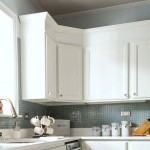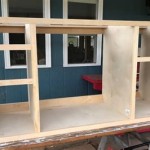Standard Height Between Upper and Lower Kitchen Cabinets: A Comprehensive Guide
The height between upper and lower kitchen cabinets is a crucial element in kitchen design, impacting both aesthetics and functionality. It influences the overall flow of the space, the accessibility of your cabinets, and even the visual appeal of your kitchen. While there are standard dimensions, the optimal height can vary based on personal preferences, kitchen layout, and individual needs. This guide provides a comprehensive overview of the standard height, factors influencing its determination, and common alternatives.
Standard Height Between Upper and Lower Cabinets
The standard height between upper and lower kitchen cabinets is typically around 48 inches or 122 centimeters. This measurement represents the distance from the countertop surface to the bottom of the upper cabinets. However, it’s important to note that this standard height is a general guideline and can be adjusted depending on various factors. The standard height provides ample space for various kitchen tasks, allows for comfortable reach to upper cabinets, and creates a balanced aesthetic.
Factors Influencing Upper and Lower Cabinet Height
Several factors contribute to the determination of the ideal height between upper and lower kitchen cabinets:
- Ceiling Height: The overall height of your kitchen plays a significant role. In kitchens with high ceilings, a greater distance between upper and lower cabinets may be preferable to maintain visual balance, while lower ceilings might necessitate a smaller gap.
- Countertop Height: The height of your countertops directly affects the overall height of the upper cabinets. Standard countertop height is typically 36 inches, but this can be adjusted based on individual preferences and accessibility needs.
- Personal Preferences and Needs: The ideal height between cabinets is also influenced by personal comfort and preferences. Individuals with taller stature or specific needs might prefer a greater distance, while shorter individuals may find a slightly smaller gap more comfortable.
- Kitchen Layout and Appliances: The size and placement of appliances, such as refrigerators, dishwashers, and stoves, can also impact the height of the upper cabinets. For instance, a taller refrigerator might necessitate a higher upper cabinet placement to avoid obstruction.
Common Alternatives to Standard Height
While the standard height of 48 inches offers a suitable starting point, there are common alternatives:
- Higher Upper Cabinets: In kitchens with high ceilings or for individuals who prefer a greater vertical storage space, raising the upper cabinets can be beneficial. Increasing the height by a few inches can significantly increase storage capacity while maintaining a balanced aesthetic.
- Lower Upper Cabinets: For kitchens with lower ceilings or for individuals who prefer a more intimate and less imposing look, lowering the upper cabinets can be preferable. Reducing the height by a few inches can create a less overwhelming and visually appealing space. However, it’s crucial to ensure sufficient clearance for overhead tasks.
- Variable Height: Some kitchen designers opt for variable heights between upper and lower cabinets. This approach involves creating a staggered or stepped arrangement, allowing for greater flexibility in cabinet placement and maximizing storage potential.
When considering variations from the standard height, it’s essential to consult a kitchen designer or a professional contractor to ensure the chosen height is functional, safe, and aesthetically pleasing. They can provide expert advice and help you make informed decisions based on your specific needs and preferences.
Ultimately, the ideal height between upper and lower kitchen cabinets is a matter of personal preference, functionality, and aesthetics. By carefully considering the factors discussed above, you can create a kitchen space that is both aesthetically pleasing and functionally optimal.

Height Between Upper Cabinets And Counters Kitchen Elevation

Are Your Uppers Lower Than 18 Kitchens Forum Gardenweb Upper Kitchen Cabinets Height Cabinet Dimensions

Kitchen Standard Dimensions Essential Measurements

Your Kitchen Renovation Measured For Perfection Rona

Cabinet Countertop Clearance To Be Mindful Of When Considering Wall Cabinets

Know Standard Height Of Kitchen Cabinet Before Installing It
Kitchen Renovation Size Requirements 1 Rona

How High Should Be Your Upper Kitchen Cabinets

How High Upper Cabinets Should Be From Your Floor And Countertop

Kitchen Cabinet Sizes What Are Standard Dimensions Of Cabinets
Related Posts








